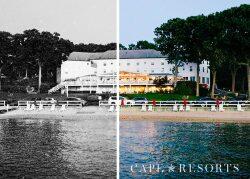The pandemic supercharged the Hamptons summer rental market, which continued to ride that wave in 2021, a new report shows.
There were 16,645 bookings for stays during the high season — Memorial Day through Labor Day — totalling $117 million, according to a report by Hamptons-focused rental business StayMarquis. That’s up 9 percent from 15,284 last year.
The report is put together using data from Airdna, which includes all bookings made on Airbnb and VRBO.
The year started out especially strong with 6,251 bookings made in the first quarter. In the first three months of 2020 there were just 2,661, as the pandemic sent New York City into panic mode in mid March. In pre-pandemic 2019, there were 5,253 summer bookings made in the first quarter.
Activity this year spiked around March, with over 5,000 bookings, just as vaccines became widely available. August had the most check-ins, with 6,082.
Read more

However, school and office reopenings led to fewer reservations at the end of summer.
“Going into the offseason, the booking demand has reverted back to 2019 levels,” StayMarquis Co-founder Bryan Fedner said.
Supply has become an issue for renters as more property owners choose not to put their homes on the market. Through this point in 2019, there were 4,685 properties available. Last year that fell to 3,428 and, in this year it remained low at 3,697.
The paucity of rental properties combined with strong demand have driven prices up. In 2021, the average high-season revenue was $31,747 per property, up from $26,659 two years ago.
Last year, length of stay was driven up by renters’ ability to work from home. The average length of stay reached 6.5 nights, up from 5.3 nights in 2019. This year, it has dropped to 5.5.
Looking forward, Fedner envisions more supply hitting the market as well as smaller demand. Still, homeowners may continue to seek high prices, with the pandemic setting a precedent.
“I don’t think we’re ever going to see pricing as low as what 2019 was,” Fedner said. “It was an incredible year, from an average nightly rate standpoint.”
